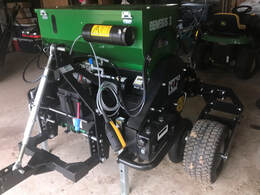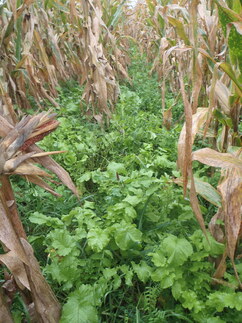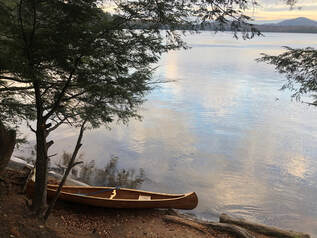CONSERVATION CORNER
A weekly blog for all things conservation
 By: Kevin Brown, Ag Resource Specialist, BCCD You haven’t? Then you just don’t know what kind of soil you are dealing with, do you? This is really a neat little experiment to see just how good your soil really is. How healthy is it? I have written a number of articles about soil health, as you may well know, and this is one way to determine how good your soil is.
0 Comments
 I have written many times about soil health- why we need it, why we should care, what it takes to get it, etc. I won’t bore you with too many of those details in this article, but one of the principles of soil health is “do not disturb the soil”. This is the reason that I talk about no till gardens, no till cropping practices, cover crops, and the list goes on. The soil is home to hundreds of thousands of organisms per teaspoon, if you have good soil health. If you are one that “needs” to plow/rototill/etc., you are essentially completely destroying those organisms’ homes. It is no different that a major hurricane coming through some ocean front town on the coast. All these beneficial organisms have built their homes in the open spaces in the soil. We need to leave them alone as much as possible for them to stay and do the good things that they do.  By Kevin Brown- BCCD, Ag team Leader If you are a regular reader of the column, or you have read something that sparked your interest, or you just disagree with something you have read, here is your chance to talk about it. We have received a grant to hold two meetings to talk about a lot of the conservation practices that we continually talk about and promote. I am going to structure the meetings to be more informal where we can listen to each other and find out what experiences other locals have had. There are a lot of people out there that are a lot smarter than I am and they have maybe done things a certain way for a long period of time and have been very successful at it. Why wouldn’t we want to hear from them? If you would like to be one of “them”, or if you want to hear from “them”, make plans to be there. I think we have plenty of great topics to talk about.  By: Kevin Brown, Ag Team Leader, BCCD Have you ever been told that, or maybe even thought that? Do you see places that aren’t immaculately manicured as “looking like crap”? Have you ever thought that maybe there was a higher purpose for that? One place I am talking about is pollinator habitat. Sure, some of these areas look beautiful in the summer when everything is blooming and when insects, birds, caterpillars and everything else is visiting the area. However, when it has used up its usefulness, we want to get rid of it as soon as possible. After all, “It looks like crap”. I have an area down here at the office that is right by the mailboxes for all the world to see. Sometimes, when I pass by it coming in to work, I even think that. It is old, dead, brown stalks of various flowers still standing 4-6’ tall. It takes me a minute to get past it, but I can because I know why it is there. We have another area at the end of the building which looks even “worse”. At least to us humans. Again, I know why it is there, so I leave it alone for the most part. Most people understand pollinator gardens for the summer. It is pretty easy to see with all the wildlife that visits them, and they are beautiful, so no one complains. However, most people don’t know that this is where a lot of insects overwinter. Because of the way we are trained, it is a lot harder to look at it for the 6 months of winter, standing there dead and all. But it is still serving a purpose.  By BRIAN ZEIDNER Over the summer I shared some of my hay-making experiences with you. I wrote about using nitrogen fertilizer, commonly known as urea, on hay fields. Many hay producers really want to know — Is it worth it? To answer that question, we must measure the quantity and quality of the harvest. As noted previously, my first cutting off-farm, non-fertilized fields produced less than two round bales per acre, while my on-farm nitrogen-fertilized ground produced 5.5 round bales per acre. The increase in the amount of hay certainly seems substantial. I also measured the quality of the hay using forage tests. I am raising beef cows and although there are many forage considerations, I look closely at three different measures on my forage tests, Crude Protein (CP), Neutral Detergent Fiber (NDF) and Energy (TDN). Although I reference these factors there are many other measurements on forage tests that a professional nutritionist may use to make recommendations.  By: Kevin Brown, Ag Team Leader Greetings. I am not necessarily going to go in this order, but these will be the topics of discussion. And I will ramble on in between topics. First topic, requests. We have had this column for a couple years now. We have hit many topics. We have heard good things about the column, and I want to continue with it, but truthfully, I am running low on topics. We have many topics that we have knowledge about- solar, electric vehicles/power equipment, fossil fuels, anything environmental, ponds, insects, streams, dirt and gravel roads, forests, crop production, and the list goes on. Please contact us with what your interests are. You can hit us up on Facebook, our website www.bccdpa.com , or call us directly. We are here for conservation, but more importantly, education. That is our passion.  By: Brian Zeidner, Guest Columnist and Bradford County Beef Producer I have a confession. I dislike numbers. But I do like information and have found that if I want to know how well my small beef farm is running, I need to measure my progress and track the results. Tracking the grain inputs of steers when finishing and checking the grade of the beef after butchering lets me know and measure the quality of my product. Calculating manure application on the hay fields builds my soils and ensures I do not contribute to water quality issues with nutrient run-off.  By: Kevin Brown, Agricultural Resource Specialist Right here in Pennsylvania! Sound crazy? Sound like something that the government came up with just to get some more of YOUR hard-earned money? Maybe, but it is happening. And, as much as you may think it’s a crazy idea, it has some validity behind it. I know I possibly could start a firestorm here but read on for where this notion is coming from and why we do need to do something about it. There may be better ideas how to handle it, but here is the concept:  By: Nathan Dewing, Agricultural Team Leader Think about all the places where you like water to be. The list might include the backyard babbling brook, the seashore, beside the Lake House, under your boat, household plumbing, and your glass complete with ice cubes. There are also plenty of places where you don’t want it like your yard, driveway, basement, or living room. To get it right, we must look at our soil.  By: Amy Kneller, Ag Resource Specialist Are you interested in protecting farms, farmland, and a persons’ ability to farm? Protecting agriculture doesn’t always require a conservation easement – it can mean simply securing the right of farmers to farm without dealing with overly burdensome regulations. That’s the role of an Agricultural Security Area (ASA), where agriculture is a primary activity in the municipality. Farmers work with municipalities to develop ASAs, which demonstrate that farming is a local priority and promote more permanent and viable farming operations. |
AuthorsVarious staff at the Bradford County Conservation District Archives
July 2024
Categories
All
|
|
Bradford County Conservation District
Stoll Natural Resource Center 200 Lake Road, Suite E | Towanda PA 18848 Phone: (570)-485-3144 |
